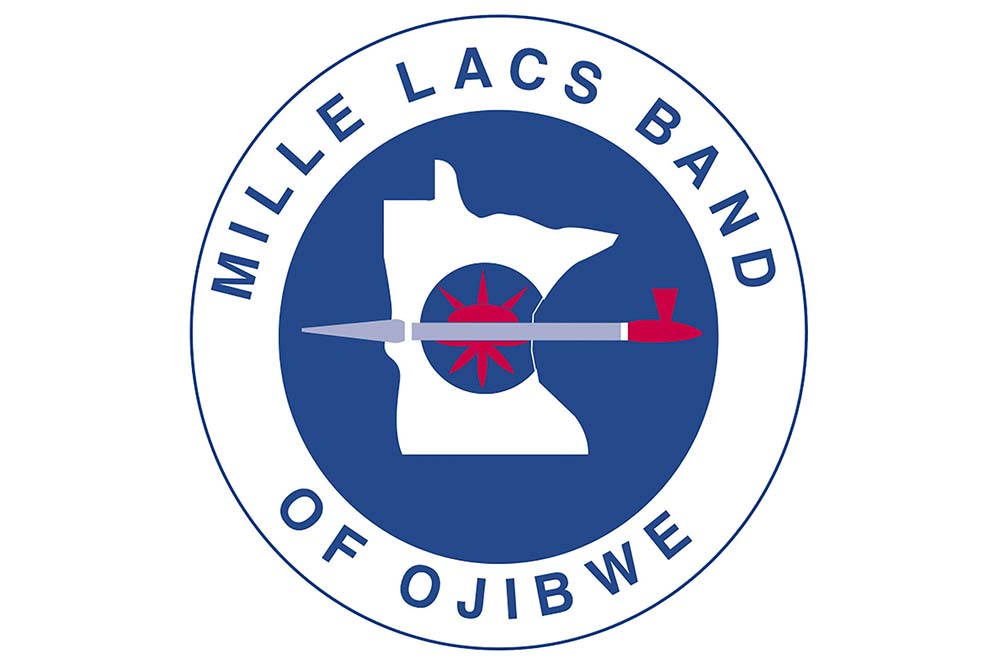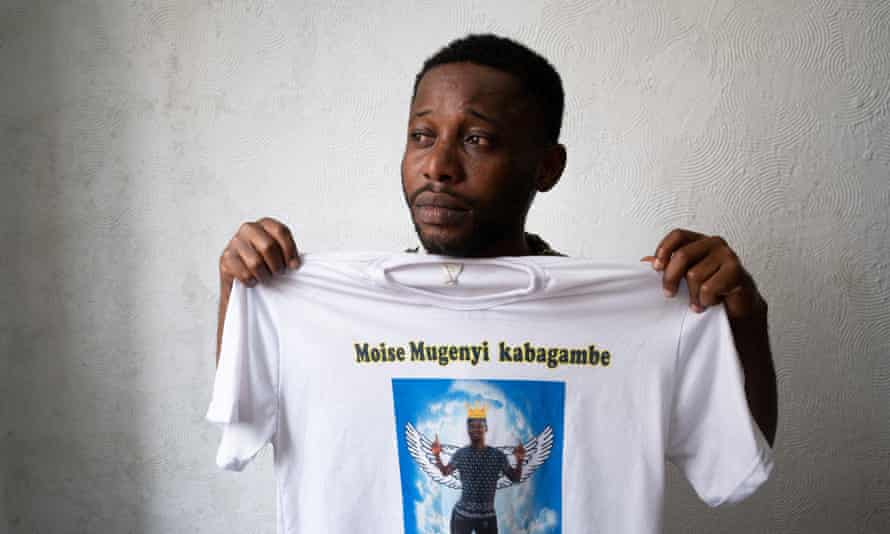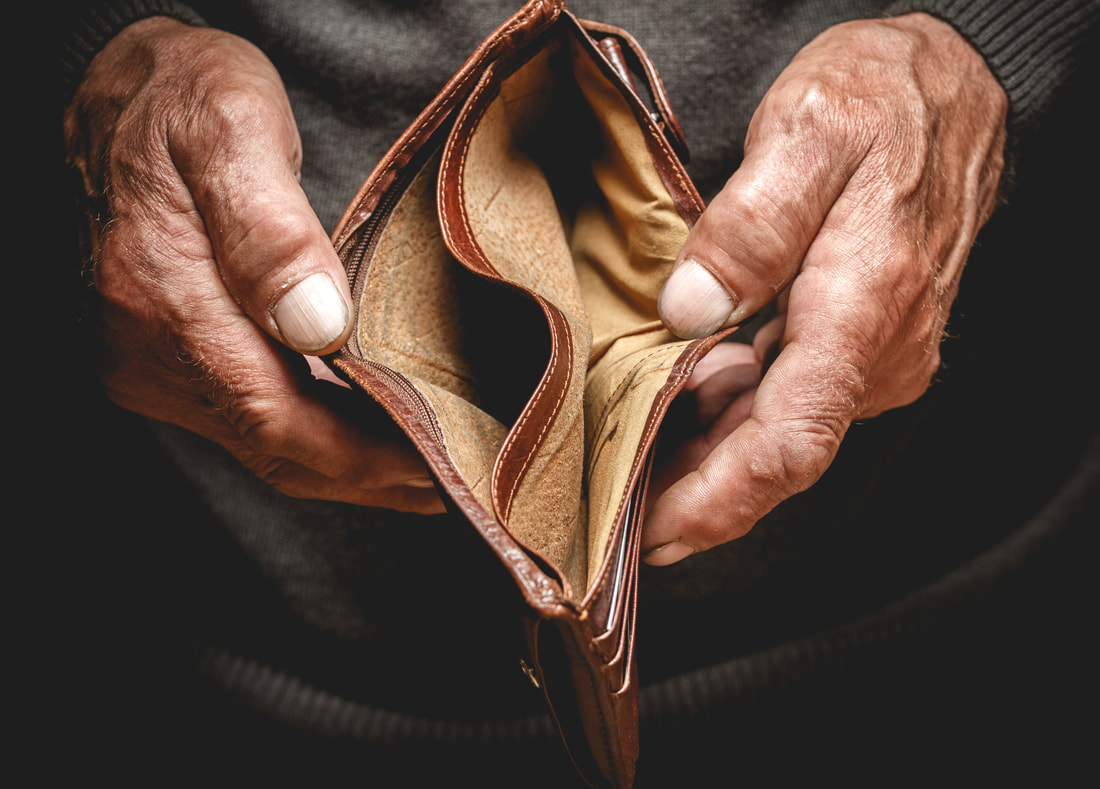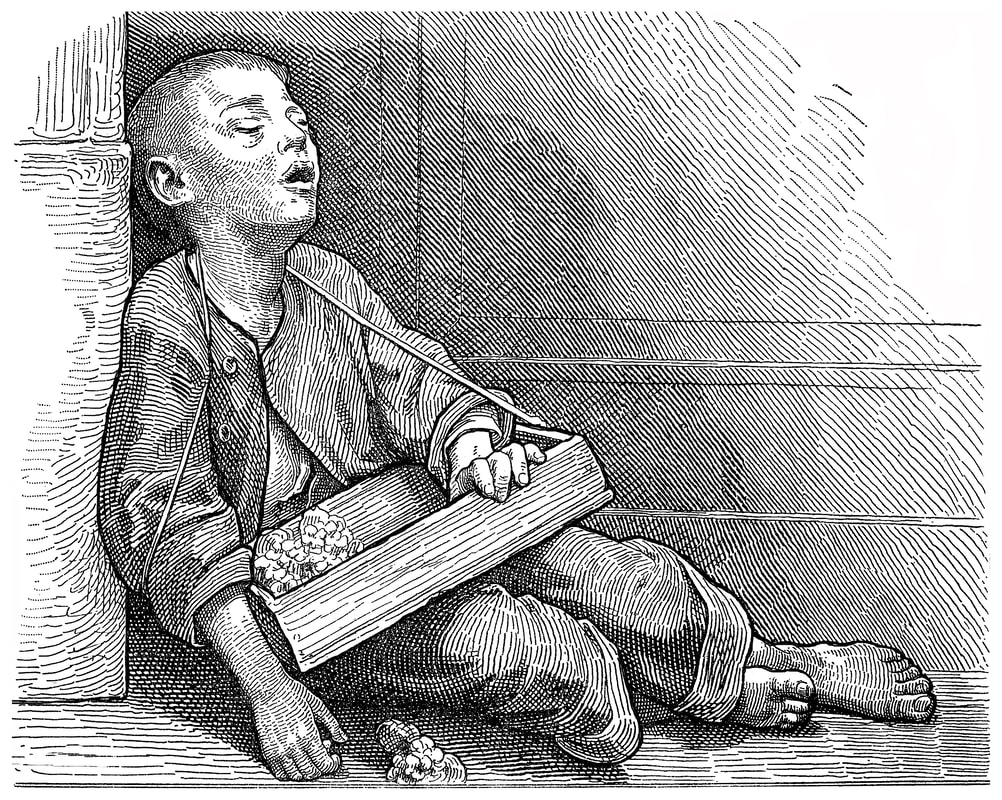|
A new report reveals Florida’s 31 different court fees, costs and surcharges imposed on youth involved in the state’s juvenile justice system and their families are not only ineffective, costly to administer, and difficult to collect, but also trap thousands in inescapable debt and poverty, reports the the Fines and Fees Justice Center.
Fees also increase the likelihood that youth will face extended or repeated involvement in the juvenile and criminal justice systems, with young people who owe court debt experiencing higher recidivism rates, longer probation periods, and an inability to expunge records, obtain driver’s licenses, or participate in job corps programs. Youth in both the child welfare and delinquency systems are also particularly vulnerable to the harmful effects of fees because they do not have financial support from their families or from the Department of Children and Families and are therefore at greater risk of being pulled into the justice system and acquiring fee debt. In addition, in 2019, only 11 percent of the $5.1 million that Florida assessed against youth was collected, with Black youth and their families carrying a disproportionate amount of the costs and fees imposed by the juvenile system, which are often imposed regardless of the young person’s guilt or innocence. From 2019 to 2020, Black youth comprised 21 percent of the population in Florida under 18, but accounted for 50.9 percent of youth arrests and it is the arrests that determine which Floridians will be saddled with fee debt. Additional Reading: John Jay Media Fellowship Program: The Hidden Fines & Fees that Create 21st-Century Debtors’ Prisons in America.
0 Comments
A recent study from Ohio State University has found that adolescents and teenagers, ages 10 to 19, cumulatively lost nearly 200,000 years of life due to unintentional drug overdoses from 2015 to 2019, a number that grew to more than 1.25 million years lost once researchers expanded the study to 10- to 24-year-olds, reports USA Today. Health experts say that the COVID-19 pandemic, coupled with the rise of fentanyl, may have worsened the crisis for younger people.
Opioids are the main driver of drug overdose deaths, and fentanyl is playing a leading role as it is increasingly being sold illicitly and mixed with other street drugs. Provisional CDC data shows teen deaths caused by fentanyl have tripled in just two years, and the non-profit Families Against Fentanyl reports that deaths due to the drug have increased from 374 among teens ages 13 to 19 in the year ending in May 2019 to 1,365 deaths in the 12 months ending in May 2021. Drug dealers mix fentanyl with other drugs including heroin, methamphetamine, and cocaine, so teens and young adults may not know they’re using it. Health experts say existing interventions aimed at adults may not work in younger populations and the university study authors argue more research is needed to determine how to best engage younger people with education, prevention, harm reduction and substance treatment, as well as community and family support. FEBRUARY 03, 2022
The Mille Lacs Band of Ojibwe is taking steps to revitalize the critically endangered Ojibwe language and Mille Lacs dialect. The Band, whose members have resided in what is today East Central Minnesota for about 250 years, partnered with Rosetta Stone’s Endangered Languages Program to create a set of Rosetta Stone lessons in Ojibwe. The lessons are free for all Band members and descendants, effective Jan. 11, 2022. “As Anishinaabe people, our language was given to us by the creator; learning that language helps us connect with our culture and live our lives in a good way,” said Mille Lacs Band Chief Executive Melanie Benjamin in a press release January 11. “This partnership with Rosetta Stone is important because it will make learning Ojibwe more accessible to Band members and others, and will help preserve our culture for generations to come.” The endangerment of the Ojibwe language did not occur by accident. Throughout the 19th century, European settlers moving west removed tribal members from the land they had lived on for generations, leaving the Band nearly landless. At the same time, the U.S. government adopted policies to violently force Indigenous people into non-Native lifestyles. “Mille Lacs Band children were moved to government boarding schools, where, in an attempt to assimilate them into mainstream society, they were forbidden from speaking the Ojibwe language or practicing their religious and cultural teachings,” the Mille Lacs Band of Ojibwe website states. “Generations of Ojibwe people were stripped of their identity in an effort to achieve conformity.” Through its partnership with Rosetta Stone, the Band is working to revitalize its language, educate the public about Ojibwe culture and provide holistic support to its members. The Rosetta Stone lessons feature Ojibwe community members, videos, and illustrations that teach vocabulary and grammar, as well as speech recognition software that compares students’ pronunciation to that of native Ojibwe speakers. “We often think of languages as what we speak or write, but overlook how they provide priceless insight into cultures,” said Paul Mishkin, CEO of IXL Learning, Rosetta Stone’s parent company, in the press release. “Our collaboration with the Mille Lacs Band of Ojibwe has created resources that support the revitalization of the tribe’s language, help pass down knowledge to the next generation of members and expose the wider public to the Band’s rich culture.” Learners can access lessons on iOS and Android mobile devices, or desktop computers. Band members can apply for the program and receive a QR code to sign up through Aanjibimaadizing, a division of the Mille Lacs Band’s Department of Administration. BY KELSEY TURNER The murder of Moïse Mugenyi Kabagambe, a young Congolese refugee in Brazil who was beaten to death after being bound hand and foot by by a group of men on one of Rio de Janeiro’s best-known beaches, has caused an explosion of anger over deep-rooted structural racism and hate violence in the country where experts claim there is “a George Floyd every 23 minutes,” reports The Guardian. Kabagambe, who worked informally as a waiter serving beach-goers, sustained fatal chest injuries after being knocked to the ground and battered dozens of times with pieces of wood and fists. Activists believe the roots of Kabagambe’s murder run much deeper, describing the killing as part of slavery’s malignant legacy in a country that received nearly 5 million enslaved people from Africa. “Brazil is a dangerous country for us black people. Beware!” tweeted Preto Zezé, a prominent black activist and impresario. Thousands of demonstrators are expected to hit Brazil’s streets on Saturday to protest against the murder.
America’s traffic laws hurt the poor, and don’t really deter anyone. But what if traffic fines scaled with income? Nicole Bolden was driving in Florissant, Missouri, in 2014 with her two small children when a car in front of her made an illegal U-turn, causing a collision. Police arrived on the scene, and, after ensuring everyone’s safety, checked Bolden’s driver’s license. They returned to her damaged vehicle with news: She was under arrest for unpaid traffic fines and fees in three counties. Bolden spent the next three days in three separate county jails, paying each $125 bond by scraping together child-support money and help from family members. On the third day, she stood in front of a judge, facing $1,758 in fines and fees––starting with a single unpaid speeding ticket from years prior. Still unable to pay, she returned to jail for two weeks until her mother withdrew life-insurance funds to secure her release.
Bolden’s inability to pay that first speeding ticket cost her, her family, and the criminal-justice system far more money than the infraction merited. In many other countries, that ticket might have cost her the price of a sandwich. Today, more than 30 European and Latin American countries levy penalties using an income-graduated, or “day fine,” model. Under this system, people who break the law pay a fine equivalent to a percentage of their income, rather than a flat fee. Finland, for example, has for the past century adjusted criminal fines based on offenders’ daily income. Depending on the severity of the offense, Finland metes out punishment according to how many days’ work it will cost you. You might lose half a day’s earnings for shoplifting, or a month’s earnings for driving while under the influence. Depending on whether you’re a nurse or an executive, those numbers will look very different. If you have no income, you could get the minimum fine (in Finland, 6 euros) or, potentially, community-service hours. “The consequences are proportionally ‘equally severe’ to all,” Katariina Paakla, a senior specialist with Finland’s Department of Criminal Law, told me in a recent email. “The day fine system can be thus seen to be more equal and effective than a system where the amount of fine is fixed.” But despite decades of rising income inequality, American lawmakers have failed to take the idea of income-adjusted fines seriously. In most of the United States, every person pays the same price for a traffic ticket, regardless of their income or social circumstance. For poor Americans, a traffic ticket can be a life-altering disaster. For rich Americans, it’s a minor inconvenience. The American criminal-justice system goes hard on people who can’t afford to pay traffic fines and easy on those who can. In 13 states, failure to pay a traffic ticket is still a misdemeanor punishable with jail time. In 34 states, missing a payment means losing your license. In a country where 86 percent of adults drive to work, losing your license can mean losing your job, and the resources to ever pay off tickets. With income-adjusted fines, financial punishment recognizes financial circumstance. “The idea of a fine is deterrence,” Lisa Foster, a co-director of the Fines and Fees Justice Center, an advocacy firm that evangelizes for day fines in the United States, told me. “What deters me is different from what would deter a minimum-wage worker and what would deter Bill Gates.” Read: Finland, home of the $103,000 speeding ticket European courts haven’t been afraid to take this theory to its logical extremes. In one much-publicized 2015 case, a Finnish millionaire received a $103,000 speeding ticket. In 2010, Swiss police issued history’s largest-recorded speeding fine, $290,000, to a repeat offender in a red Ferrari. Poor and middle-class people may see those fines from their own financial perspectives, making them seem like a bigger blow to the offenders than they actually are. And that’s the beauty of a day fine: It tailors the punishment to the person. Many Europeans have come to appreciate day fines as a commonsense fact of criminal proceedings, evening the scales of justice in such instances as petty theft and securities fraud. The United States would do well to follow suit. Adjusting traffic fines based on income would be a good place to start. Traffic stops are Americans’ most common interaction with the criminal-justice system. And even a typical traffic offense could financially devastate a large percentage of citizens. Every year, as part of its economic-well-being report, the Federal Reserve asks Americans whether they have access to $400 in cash to pay an unexpected expense. In 2020, 35 percent of the Americans surveyed said that they did not. In California, the fine for driving unlawfully in the carpool lane is $490. In North Carolina, a first-time speeding ticket runs up to $1,000. And, despite evidence that the nation’s wealthiest are more likely to break the law while driving, research from cities such as Chicago shows that the poor are far likelier to be ticketed. For many ordinary Americans, a speed trap can quickly become a poverty trap. America’s flat-fine model also disproportionately burdens racial minorities, who are poorer on average and more likely to be pulled over. In many American cities, police are more likely to stop, ticket, and search people of color. In the Cleveland, Ohio, suburb of Newburgh Heights, for example, Black residents make up 22 percent of the population but 76 percent of license and insurance violations and 63 percent of speeding cases. And for Black Americans, routine traffic stops can turn deadly, as the police killings of Philando Castile, Maurice Gordon, and Daunte Wright each demonstrate. For this reason, recent police-reform initiatives in cities such as Berkeley, California, have focused on ending police involvement in the traffic stop. But one alternative, automated camera enforcement, risks entrenching and accelerating the criminalization of poverty. The camera enforcer might ticket without bias or violence but will also likely issue more tickets. Take the police reform in Camden, New Jersey. In 2011, the city disbanded its police department after reports of rampant corruption. Two years later, it launched a network of 200 cameras equipped with license-plate readers on city streets. But these robot enforcers actually caught and ticketed more small-vehicle code violators than a human officer might. The camera became a draconian enforcer of traffic law, doling out fines and fees indiscriminately, which, with each missed payment, threatened to ensnare low-income citizens in a perpetual cycle of criminal debt. Similarly, after Washington, D.C., switched from police to automated speed enforcement in 2013, ticketing increased sevenfold. If American cities and states continue to expand ticketing without adjusting fines based on income, poor people and minorities will likely suffer the most. As far back as 12th-century England, lawmakers worried that too-high fines could result in unequal justice. In 1215, Magna Carta codified the understanding that fines should “not be so large as to deprive [a person] of his livelihood.” Early American colonies recognized the same idea: One 1682 New Hampshire statute identified a poverty line below which offenders could opt for whipping instead of fines. The drafters of the law noted that some people were “so indigent as … the paying of fines may be very injurious to themselves and families.” The colonists recognized that, for some, extreme physical harm might still be preferable to crushing debt. In many modern American states, low-level traffic offenders face both physical danger and financial ruin. In 2019 in Rochester, New York, Desiree Barron was rushing home to take her insulin when she was pulled over for speeding. During this stop, she learned that her license had been suspended because of more than $3,000 in unpaid tickets. Police arrested Barron and ignored her requests for insulin. In jail, cut off from her medication for days, she nearly died before her doctor and public defender intervened, according to a 2019 lawsuit. In December 2020, then–New York Governor Andrew Cuomo signed a bill ending driver’s-license suspensions for unpaid traffic fines. But compounding fines, and the practice of jailing debtors, continue in New York and many other states. Perhaps reform has been slow because without ticket revenue, many governments wouldn’t be able to pay their bills. In 2015, the Department of Justice released a comprehensive report on Ferguson, Missouri, revealing a perverse incentive structure behind its harsh policing: 30 percent of the city’s revenue came from fines and fees. The report stated that policing practices reflected “the city’s focus on revenue rather than on public safety needs.” Many other cash-strapped jurisdictions depend on code violators to fund public goods. In November, a New York Times analysis of census data found that more than 730 municipalities depend on fines and fees for at least 10 percent of their revenue. Henderson, Louisiana, ticketed its 2,000 residents for $1.7 million in 2019—89 percent of its general revenue. In 2016, the Henderson assistant police chief pleaded guilty to using State Highway Commission funds to grant officers cash rewards for writing traffic tickets. Read: The surprising ways bankrupt cities make money Cities and states build budgets—and roads, zoos, and government buildings—using the revenue from criminal fines. In some states, even the criminal-justice system itself benefits from fine revenue, raising questions about conflicts of interest. Just last November, for example, the state of Louisiana cut judges’ salaries after they failed to collect expected court fines and fees. “This is taxation by citation,” Dick Carpenter, the senior research director of the libertarian legal group Institute for Justice, told me. “And when racial minorities and people of lower means are overrepresented in payment of fines and fees, it becomes particularly troubling.” The Constitution’s Eighth Amendment, which declares that “excessive bail ought not to be required, nor excessive fines imposed, nor cruel and unusual punishments inflicted,” seems to offer a solution. For decades, this “excessive-fines clause” didn’t factor much into state or municipal rulings. In 2019, though, a landmark Supreme Court decision helped revive the excessive-fines clause from relative obscurity. After Tyson Timbs pleaded guilty to dealing drugs in Indiana, police seized his $42,000 Land Rover through a revenue-generating practice known as civil forfeiture. Timbs partnered with the Institute for Justice to file a petition for Supreme Court review. In Timbs v. Indiana, the justices unanimously ruled the seizure unlawful under the Eighth Amendment. To many legal scholars, bringing an ability-to-pay case to the highest court is the logical next step. But just earlier this month, the Supreme Court denied review of such a case in which an immigrant appealed a $4,000 fine for illegal reentry. Critics say that the day-fine model just wouldn’t work in an American context. But the idea has been tried before. In an oft-forgotten 1980s experiment, as the “tough on crime” era sparked unprecedented mass incarceration, legislators began seeking alternatives to imprisonment. Beginning in 1987, the Vera Institute for Justice launched six day-fine pilot programs in demographically diverse American regions: Staten Island, New York; Maricopa County, Arizona; Bridgeport, Connecticut; Polk County, Iowa; four counties in Oregon; and Milwaukee, Wisconsin. Early reports from most of these programs showed reduced crime and recidivism. Unfortunately, the same “tough on crime” ethos that inspired the programs eventually led to their demise. In subsequent years, as mandatory-minimum sentences grew in popularity, each program lost funding. “The political climate wasn’t ready for day fines,” the UCLA law professor Beth Colgan, who has written extensively about the day-fine pilot, told me. “But times have changed.” The 1980s day-fine pilots also exposed potential obstacles to reform. For one, most countries determine day-fine penalties at a national level. In the decentralized United States system, municipal legislators will have to assume the time-consuming task of assigning penalty points to every infraction. Privacy poses a hurdle too: Nordic courts can access citizens’ tax records to determine their ability to pay, but most Americans’ income information is not so readily available. Ability-to-pay determinations will require citizens to self-report their financial circumstance, which critics say is rife with opportunities for fraud. Colgan believes that the biggest obstacle to day-fine adoption today remains political. She points to the single failed pilot: in Ventura County, California. Before the 1991 program could get off the ground, a new county judge took the bench, began decrying it as “reverse wealth discrimination,” and quickly got the project killed. The prospect of skyrocketing fines for people with money and power might not sit well with those who have the money and power to block it. American day-fine advocates may be more likely to succeed, Colgan says, if they prioritize fine relief for the poorest over increasing fines for the richest. Simply reducing fines for low-income people shouldn’t require much start-up work. Determining a person’s financial circumstance can get complicated, but it’s not a problem that the U.S. hasn’t tackled before. A 2021 California traffic-fine-relief pilot, for instance, used existing state-welfare programs to provide proof of need. Low-income citizens in five counties could log on to an online portal and upload pictures of their food stamps or Medi-Cal card to receive traffic-fine reductions. In the city of San Francisco, low-income citizens who can offer proof of public assistance can get their traffic fines reduced by 80 percent. In the long run, adjusting fines by income might increase overall revenue. Most states don’t reliably track court debt, but available evidence suggests that it’s staggering. California, one of the few states with robust data, is owed $10.6 billion in unpaid fines. In 2017, the Texas legislature ruled that all fines must be adjudicated in municipal court and that judges must assess ability to pay, with an option to combine community service and a payment plan during sentencing. So far, the amount of fines and fees imposed has decreased, but the amount collected has actually increased. “When people face a fine that they know they’ll never be able to pay, they throw up their hands and walk away,” Foster, of the Fines and Fees Justice Center, said. “If people can pay, then people pay.” The problems with state and municipal traffic codes go beyond unaffordable fines. Evidence shows that deterrence alone rarely works, and suggests that fines should play only a small role in street safety. The same Scandinavian countries that are unafraid to deliver hefty fines place prevention far ahead of punishment. In the 1990s, Sweden adopted “Vision Zero”: the goal of zero traffic deaths. The idea, which has since spread through Scandinavia, Europe, and parts of the U.S., takes an infrastructural approach, redesigning streets to decrease speeds and investing in public transportation, walkability, and bike lanes. Scandinavian countries have some of the world’s lowest speed limits and its most exacting traffic laws. In Finland, fines can be huge, but they play a small role in the country’s public-safety strategy. Designing a street so that people are unlikely to speed is easier than catching and fining everyone who breaks the law. “There are many ways to prevent crimes,” Paakla, of Finland’s Department of Criminal Law, wrote. “Criminal sanctions should be the last resort.” Still, in day-fine countries, citizens have internalized an ethos of traffic safety and rule following that may shock the American driver. In a 2019 survey of Norwegian drivers, nearly all respondents self-reported that fear of harsh penalties had kept them from speeding. That same year, 48 percent of Americans surveyed by AAA said that they had recently exceeded highway speed limits by 15 mph or more. I learned about this cultural difference the hard way. Last summer, while driving down a rural road in the Norwegian Arctic, I missed a speed-limit change from 60 kilometers per hour to 50. An officer clocked me at 71 kilometers per hour, a violation worthy of one of Norway’s highest traffic penalties, which get harsher at lower speed limits. Because I wasn’t a citizen, they couldn’t adjust my fine. The officer handed me a 9,050 kroner ticket, the equivalent of $1,033, for going 44 mph in a 30 zone. She let me know that I could pay the ticket online in monthly installments of 50 kroner, or about $6. When I told my Norwegian friends about the incident, they couldn’t believe my brazenness. They told me I had gotten lucky; I could have been fined 10 percent of my annual income for the offense. According to Norwegian law, my penalty was equivalent to what speeding in residential areas might cost someone earning $10,300. I’ll be paying for that luck for the next two years. Brett Simpson is a writer and radio reporter based in San Francisco. Her work has appeared in The New York Times and on NPR and Public Radio International. An examination of 20 US urban areas found the number of deaths among people living without housing shot up by 77% in the five years ending in 2020.
The rising number of deaths is blamed on the danger faced by the increasing population of homeless people, ranging from street violence, to disease and drugs, reports The Guardian. An estimated 18,000 people have died homeless from 2016 through 2020 in encampments, on sidewalks or in shelters, including 5,000 deaths in 2020 alone, according to an analysis conducted by the publication. But because the federal government makes no effort to count deaths of homeless people nationally, experts estimate that the total number of deaths ranges between 17,000 and 40,000 every year. People without a home face three times the risk of death of the general population, according to a local analysis of 2017 to 2019 deaths by Los Angeles county health department’s center for health impact evaluation. It found homeless people in Los Angeles were 35 times more likely to die of drug or alcohol overdose, 16 times more likely to die of traffic-related injuries, such as being hit by a car, and 14 times more likely to be the victim of homicide. In 2020, drug overdose deaths were the top cause of death among homeless people in every urban area that reported causes. The bill was introduced in response to a state investigation that found police used fake forensic evidence during interrogations. Virginia Republicans in the state's House of Delegates voted down a bill in committee last Friday that would've prohibited Virginia police from using false documents when interrogating suspects.
Delegate Jackie Glass (D–Norfolk) sponsored House Bill 1281 after former Virginia Attorney General Mark Herring revealed in January that the Virginia Beach Police Department had forged forensic science reports at least five times for use in interrogations. After an investigation by the Virginia Office of Civil Rights, the city and the department agreed to end the practice. Glass's bill would've prohibited police from using "any document generated by law-enforcement officers or their agents that (i) contains a false statement, signature, seal, letterhead, or contact information or (ii) materially misrepresents any fact" when conducting "a custodial interrogation to secure from any person his cooperation or confession or to secure a conviction." Republicans, who have a majority in the Virginia House and killed the bill in the Courts of Justice subcommittee, defended the practice of using fake documents, arguing that the criminal justice system should prioritize the needs of victims over defendants and that falsified evidence gives police an additional tool to coerce confessions. "How many times has this been used to find out about a murder, find out about a rape, find out about a break in?" Del. Wren Williams (R–Patrick) said according to a report in the Daily Press. "Aren't we supposed to be using the justice system to make it just for our victims?" Madison County Attorney Clarissa Berry (I) reportedly opposed the bill because "whether or not a confession is coerced is a matter for the trial court to take up." Ramin Fatehi, Norfolk Commonwealth Attorney, told the subcommittee that allowing police to forge documents gives police too much license. "We agree the Constitution allows the police to lie to people and sometimes this is a necessary investigative tool. But forging documents goes too far." Although Virginia Republicans claim that allowing police to lie can help the police solve crimes, this tactic can easily be used by corrupt officers to put innocent people in prison. An infamous instance of this happened when the New York State Troop C Scandal resulted in an innocent man, John Spencer, being sent to prison for murder over completely fabricated evidence. Police lifted Spencer's fingerprints and attached them to evidence cards they claimed they found at the scene of the murder. The Innocence Project, a legal organization that seeks to investigate and overturn wrongful convictions, rebuts the claim that these tactics are never misused. "Many of the nation's more than 360 wrongful convictions overturned by DNA evidence involved some form of a false confession," The Innocence project says. Those false confessions are often the result of "[d]evious interrogation techniques, such as untrue statements about the presence of incriminating evidence." Herring said in January that his office would contact those defendants whose cases were affected by the use of forged documents. "This was an extremely troubling and potentially unconstitutional tactic that abused the name of the Commonwealth to try to coerce confessions," Herring said in a statement. |
HISTORY
April 2024
Categories |
© Walk 4 Change. All rights reserved.








 RSS Feed
RSS Feed